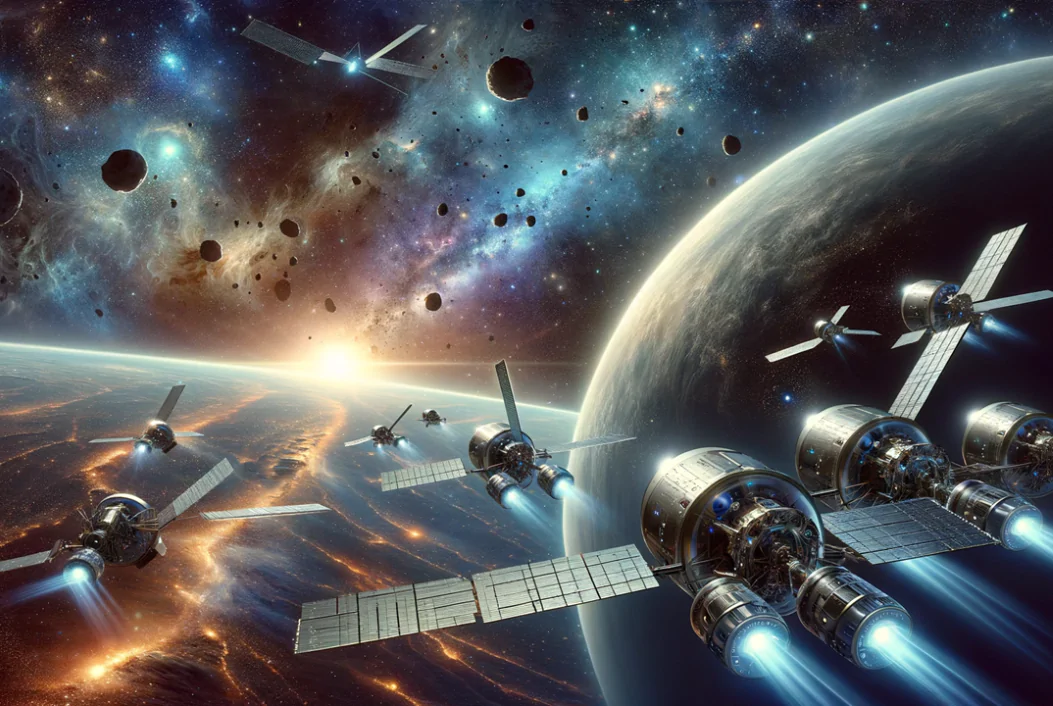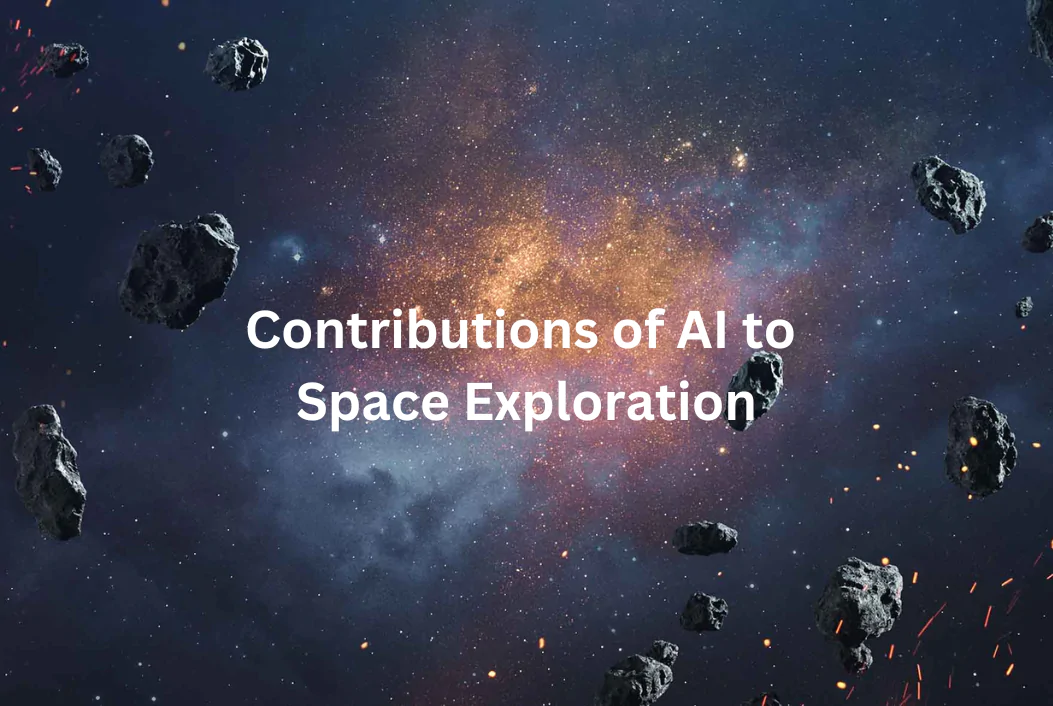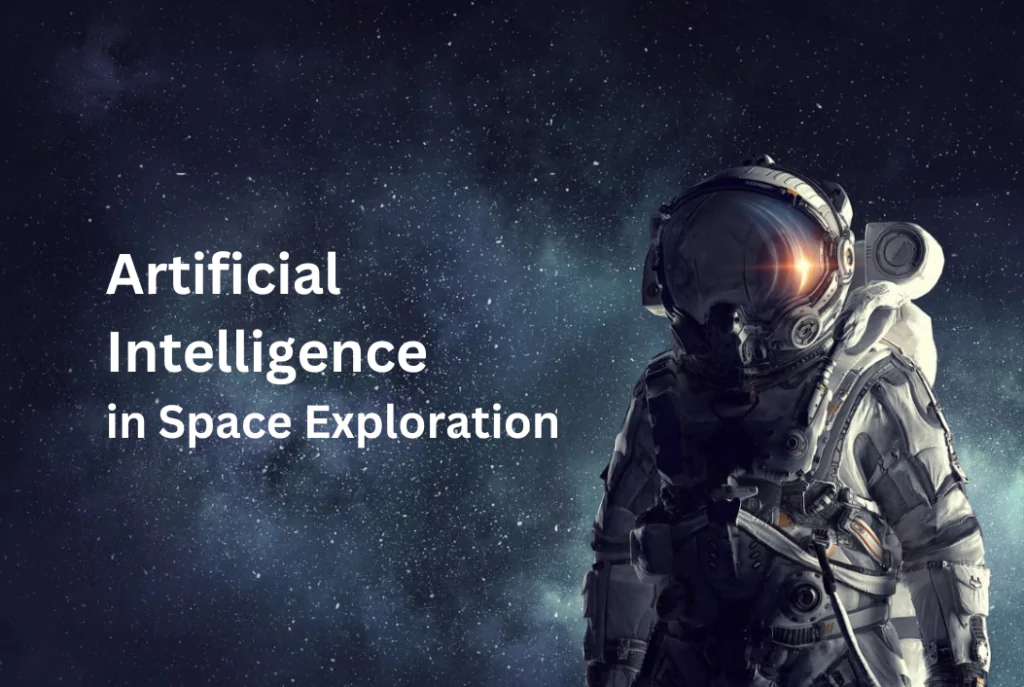Space exploration has always been a field that pushes the boundaries of human knowledge and technological capability. From the first human steps on the moon to the ongoing exploration of Mars, the quest to understand the cosmos is a testament to human ingenuity and curiosity. Today, artificial intelligence (AI) is playing a transformative role in this grand adventure, enabling us to explore deeper, smarter, and more efficiently than ever before. This blog will delve into the various ways AI is revolutionizing space exploration, from mission planning to data analysis and beyond.
AI in space exploration include AI-driven telescopes, advanced autonomous probes for exploring hostile environments, smart habitats for astronauts, and AI systems for managing interstellar travel.
Mission Planning and Optimization

Planning a space mission is a complex endeavor that requires meticulous attention to detail and extensive calculations. AI algorithms excel at processing vast amounts of data and can optimize mission parameters far beyond human capabilities. For instance, AI can analyze different trajectory options for spacecraft, considering factors like fuel efficiency, travel time, and gravitational assists from other celestial bodies. This optimization ensures that missions are not only feasible but also cost-effective and safe.
NASA’s Jet Propulsion Laboratory (JPL) has been leveraging AI to design optimal routes for missions. The use of AI in trajectory planning was notably significant in the Mars 2020 mission, which successfully landed the Perseverance rover on Mars. AI helped to determine the best landing site by analyzing high-resolution images and other data, ensuring a safe touchdown in a scientifically valuable location.
Autonomous Navigation and Operation
Once in space, spacecraft and rovers often need to operate autonomously due to the vast distances and communication delays involved. AI-powered systems can make real-time decisions without waiting for instructions from Earth. For example, the Mars rovers use AI to navigate the Martian terrain. This involves avoiding obstacles, selecting routes, and conducting scientific experiments autonomously.
The European Space Agency’s (ESA) Rosetta mission, which landed the Philae probe on Comet 67P/Churyumov-Gerasimenko, utilized AI to analyze the comet’s surface and adjust its operations accordingly. This autonomy is crucial for missions to distant locations where direct human intervention is not possible.
Learn more about 7 Incredible Ways AI Is Being Used in Space Exploration
Data Analysis and Scientific Discovery

Space missions generate enormous amounts of data, from high-resolution images to spectroscopic readings. AI is essential for processing and analyzing this data, helping scientists to make sense of it and discover new phenomena. Machine learning algorithms can identify patterns and anomalies that might be missed by human researchers, leading to breakthroughs in our understanding of the universe.
For instance, the Kepler Space Telescope, which searched for exoplanets, used AI to sift through the data and identify potential planets orbiting distant stars. Google’s AI team collaborated with NASA to develop a neural network that identified two new exoplanets by analyzing Kepler’s data. Such discoveries are critical in the ongoing search for Earth-like planets and the potential for extraterrestrial life.
Enhancing Human-AI Collaboration
AI is also enhancing the collaboration between astronauts and robotic systems. On the International Space Station (ISS), AI-powered assistants like CIMON (Crew Interactive MObile CompanioN) help astronauts with tasks, provide information, and even offer companionship. These AI assistants can access and process information quickly, aiding astronauts in their experiments and daily routines.
Furthermore, AI is being developed to assist in the maintenance and repair of spacecraft. Robotic systems equipped with AI can perform inspections and repairs in space, reducing the risk to human astronauts and ensuring the longevity of space missions.
Contributions of AI to Space Exploration

AI has made significant contributions to space exploration, enhancing our capabilities and leading to groundbreaking discoveries. Some key contributions include:
- Precision Landing: AI algorithms have improved the accuracy of landing spacecraft on other planets, minimizing risks and ensuring successful missions.
- Resource Management: AI optimizes the use of resources such as fuel, energy, and time, making missions more efficient and cost-effective.
- Data Processing: AI processes and analyzes vast amounts of data from space missions, identifying new phenomena and aiding scientific research.
- Autonomous Operations: AI enables autonomous navigation and operation of spacecraft and rovers, allowing them to make real-time decisions and adapt to unforeseen challenges.
- Predictive Maintenance: AI predicts potential equipment failures and performs maintenance tasks, increasing the reliability and longevity of space missions.
Future Prospects
The future of AI in space exploration looks incredibly promising. As AI technology continues to advance, we can expect even more sophisticated applications. Some future prospects include:
- AI-driven telescopes: Enhancing the capability to detect and analyze distant celestial objects.
- Advanced autonomous probes: Capable of exploring hostile environments like the surface of Venus or the ice-covered oceans of Europa.
- Smart habitats: For astronauts on the Moon or Mars, where AI can manage life support systems, resource utilization, and emergency responses.
Moreover, AI could play a crucial role in the eventual goal of interstellar travel, managing the complexities of long-duration missions and ensuring the safety and well-being of human travelers.
Conclusion
AI is proving to be an invaluable asset in the field of space exploration, enabling us to push the boundaries of what is possible. From planning and navigation to data analysis and beyond, AI is transforming how we explore the cosmos. As we continue to integrate AI into our space missions, we are not only expanding our technological capabilities but also inching closer to answering some of the most profound questions about our place in the universe. The synergy between AI and space exploration promises a future where the stars are within our reach, and the mysteries of the cosmos are unraveled with unprecedented precision and insight.
Frequently Asked Questions (FAQ)
How is AI used in space exploration?
AI is used in space exploration for mission planning, autonomous navigation, data analysis, and enhancing human-robot collaboration. It helps optimize trajectories, process vast amounts of data, and allows spacecraft to operate independently.
What are the benefits of using AI in space exploration?
The benefits of using AI in space exploration include increased efficiency, improved safety, cost-effectiveness, and the ability to conduct missions that would be impossible with human intervention alone. AI also helps in making real-time decisions and discovering new scientific phenomena.
Can AI help in finding extraterrestrial life?
Yes, AI can assist in the search for extraterrestrial life by analyzing data from telescopes and space missions, identifying patterns, and detecting potential signs of life on other planets or moons.
What role does AI play in Mars exploration?
AI plays a crucial role in Mars exploration by enabling rovers to navigate the Martian terrain autonomously, conduct scientific experiments, and analyze data to find signs of past or present life. AI also helps in planning and executing missions to Mars.
What are some examples of AI in space
exploration missions?
Examples of AI in space missions include NASA’s Perseverance rover, which uses AI for navigation and data analysis; the ESA’s Rosetta mission, which used AI for surface analysis; and the Kepler Space Telescope, which employed AI to identify exoplanets.
What are the future prospects of AI in space exploration?
Future prospects of AI in space exploration include AI-driven telescopes, advanced autonomous probes for exploring hostile environments, smart habitats for astronauts, and AI systems for managing interstellar travel.


